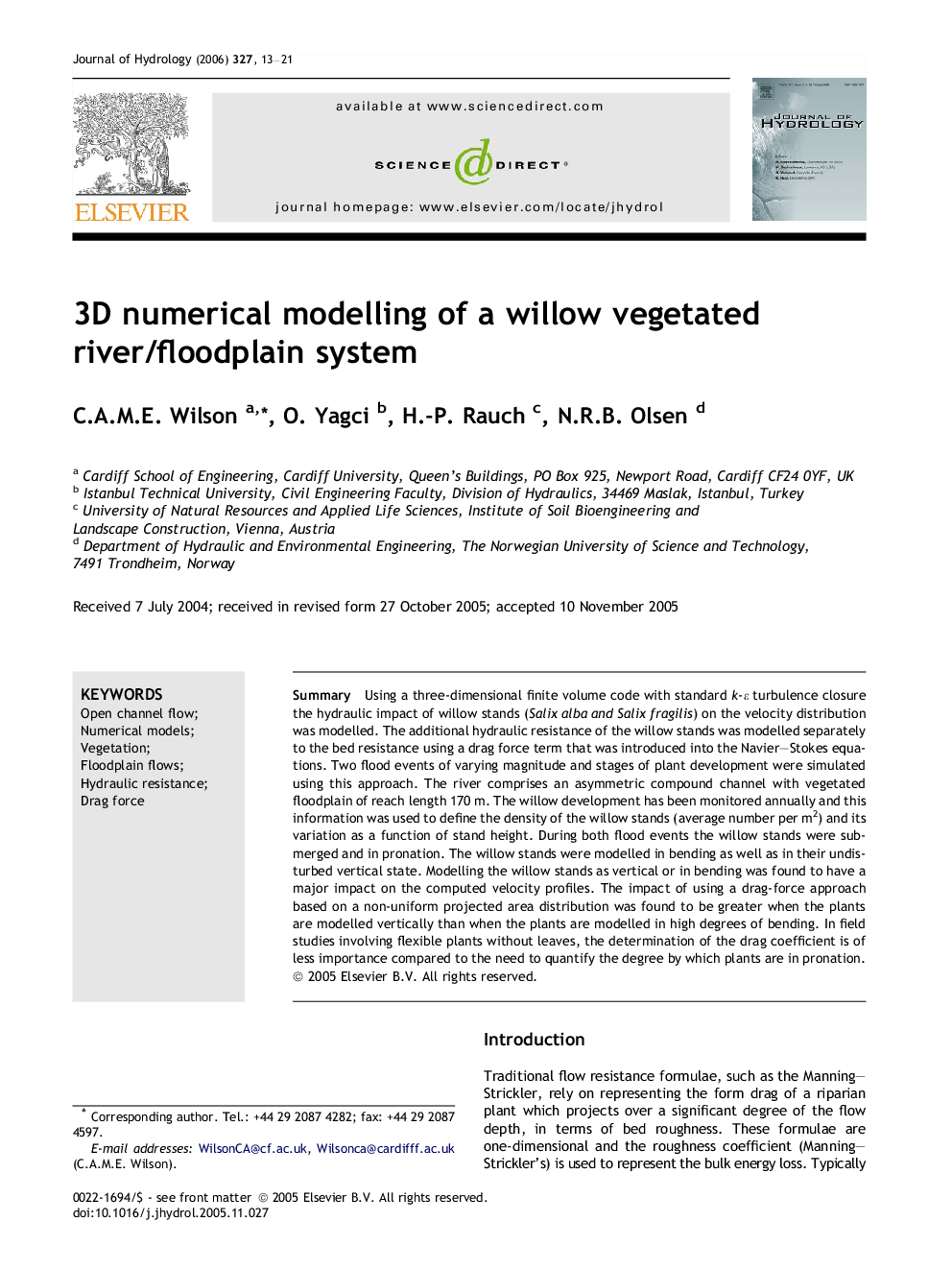| Article ID | Journal | Published Year | Pages | File Type |
|---|---|---|---|---|
| 4580784 | Journal of Hydrology | 2006 | 9 Pages |
SummaryUsing a three-dimensional finite volume code with standard k-ε turbulence closure the hydraulic impact of willow stands (Salix alba and Salix fragilis) on the velocity distribution was modelled. The additional hydraulic resistance of the willow stands was modelled separately to the bed resistance using a drag force term that was introduced into the Navier–Stokes equations. Two flood events of varying magnitude and stages of plant development were simulated using this approach. The river comprises an asymmetric compound channel with vegetated floodplain of reach length 170 m. The willow development has been monitored annually and this information was used to define the density of the willow stands (average number per m2) and its variation as a function of stand height. During both flood events the willow stands were submerged and in pronation. The willow stands were modelled in bending as well as in their undisturbed vertical state. Modelling the willow stands as vertical or in bending was found to have a major impact on the computed velocity profiles. The impact of using a drag-force approach based on a non-uniform projected area distribution was found to be greater when the plants are modelled vertically than when the plants are modelled in high degrees of bending. In field studies involving flexible plants without leaves, the determination of the drag coefficient is of less importance compared to the need to quantify the degree by which plants are in pronation.
